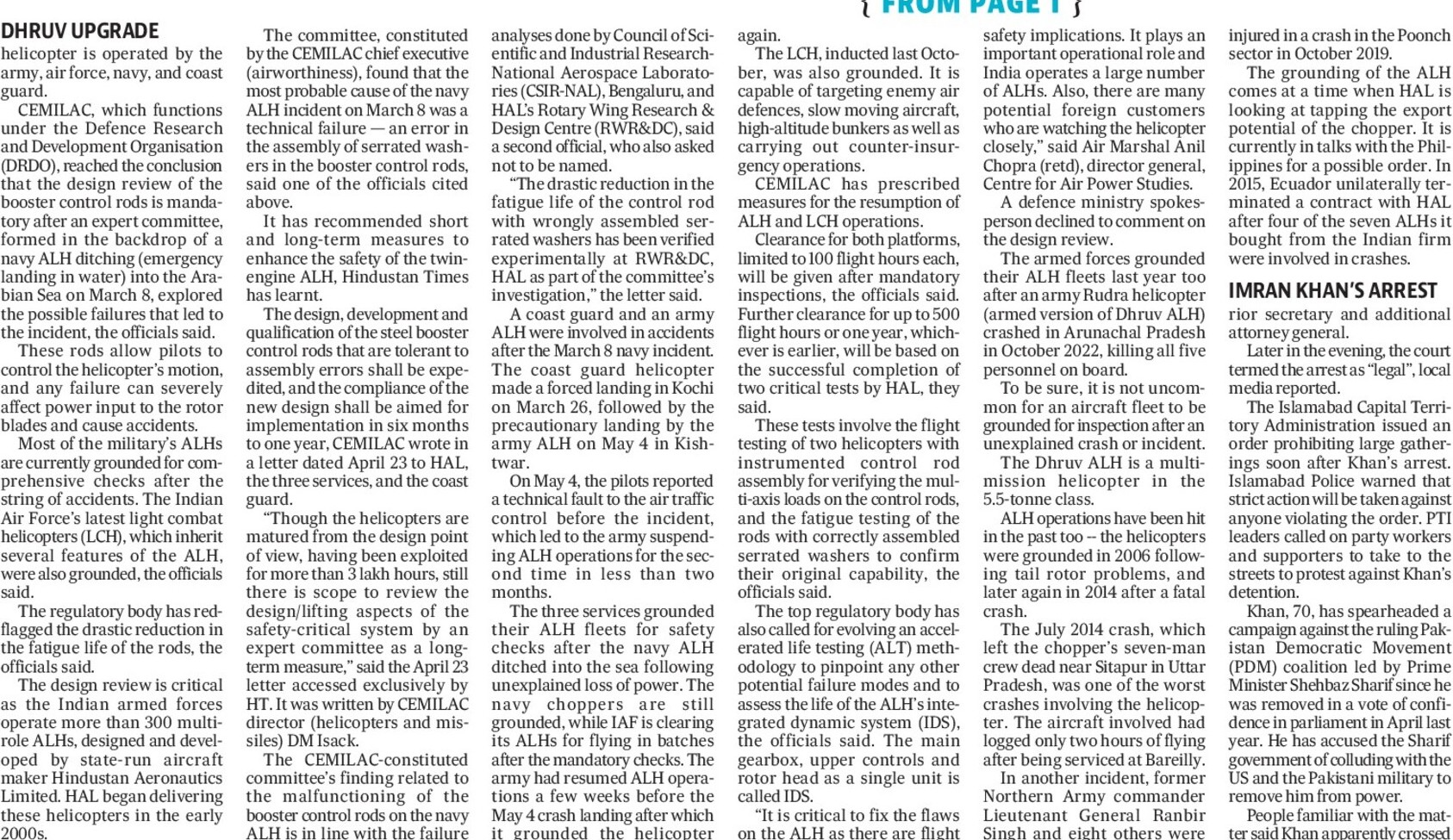Link: https://kaypius.com/2022/10/23/thoughts ... t-21-2022/
Oct 2019 crash:Understanding the “flying brick”
The Print article raises this important issue of “collective failure“. The collective lever in a helicopter is in essence the power lever. Moving the lever up or down controls the pitch of all rotor blades — collectively and by the same amount. Losing collective (or cyclic control) is worse than losing one or both engines. Let me explain why.
A helicopter is essentially a flying brick, kept in the air by spinning rotor blades that need cyclic and collective pitch changes for each and every condition of flight. The helicopter pilot’s last line of defence in an extreme situation of losing both engines (autorotation) is still way better than losing control over the rotor disc. A “collective failure” of main rotor essentially does that. It decouples the power lever (collective) from the main rotors, leaving the pilot to execute a “deadstick”, “cyclic-only” approach ending with a high-speed run-on landing.
“Collective failure” in a rigid rotor system
Unlike aeroplanes, helicopter landing gear (skid or wheel) is rather averse to high-speed run-on landings — about 40-60 knots (80-120 kmph) would be the outer edge of certified envelope on a firm, level, even surface; not to talk of water-landing where a running landing may “cartwheel” the machine over. Think of “control failure” as driving on a winding mountain road and suddenly losing the steering wheel. Wouldn’t properly certified automobiles absolutely preclude such an occurrence? Now think helicopters flying over treacherous, hostile terrain.
The ALH has a hingeless rotor system designed for high agility and performance stretching from sea level to super high altitude. It’s an elite club where only a few OEMs can safely compete. The one that keeps it all together in flight is the pilot, acting through the propulsion system (comprising engines and the rotor system) and the flight control chain. As opposed to helicopters with fully-articulated rotor systems that “feather”, “flap” and “drag” about mechanical hinges, rigid-rotor helicopters like ALH achieve all these three movements about elastomeric bearings and “virtual hinges”. The blades are forced to “twist and shout” through daunting aerodynamic odds by servo jacks holding the blades against flex-beam, elastomeric, not mechanical bearings. So, should any upper control linkages or primary servo jacks fail, the blades will almost instantaneously “offload” and spring back to ‘installed angle’ or one that offers least resistance to relative airflow.
What did we learn from 2019?
In short, should a “collective failure” occur, on the ALH, the pilot will be left with a high rate of descent, one-way-ticket-down, with an impending high-speed, cyclic-only landing. What if the terrain below is “hostile”?
It is for the reader to surmise the almost impossible odds that pilots flying Lt Gen Ranbir Singh & Co in the ALH Mk 3 on Oct 24, 2019 faced when they experienced “collective failure” in the most inauspicious location — hilly terrain with no clear area to carry out a running landing. In the event, the pilots skillfully managed to put down the helicopter in a valley within the maxim of “if you cannot save the airframe, save the pax”. Such feats are not repeatable or guaranteed for success each time; nor are such “failures” or “recovery procedures” standardised or described in OEM manuals — they cannot be; they are NOT supposed to fail.
Link: https://kaypius.com/2019/10/25/army-alh ... y-lessons/
As they are early thoughts, not much analysis.
But here is the snippet from Print:
The crash might have broken the rods. The rod joints at the bell crank could have come loose leading to loss of control.The accident brings to mind the deadly crash in 2019 of an ALH Dhruv, in which Lt Gen Ranbir Singh, who was the Northern Army commander at that time, had a miraculous escape after the chopper carrying him and seven others crash-landed in Jammu and Kashmir’s Poonch region.
While the findings of the court of inquiry into that crash is not public, sources in the defence establishment said that the crash happened after the “collective”, which controls the power to the rotors and back, broke.
This, the sources said, was a manufacturing defect.
Maybe even better is a cotter pin so the bolt doesn't separate if the washer is loose.





